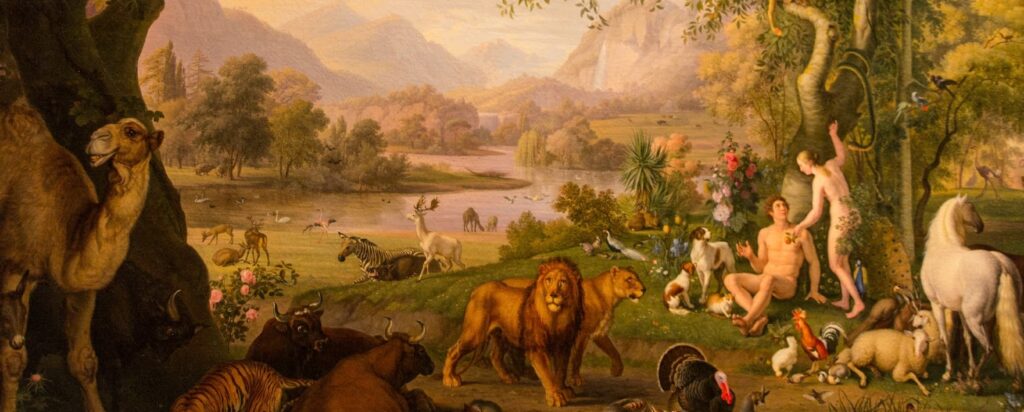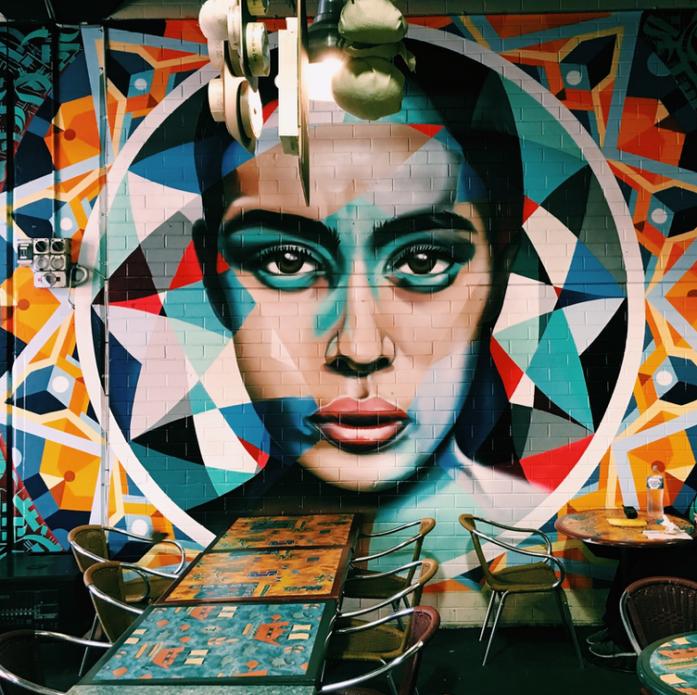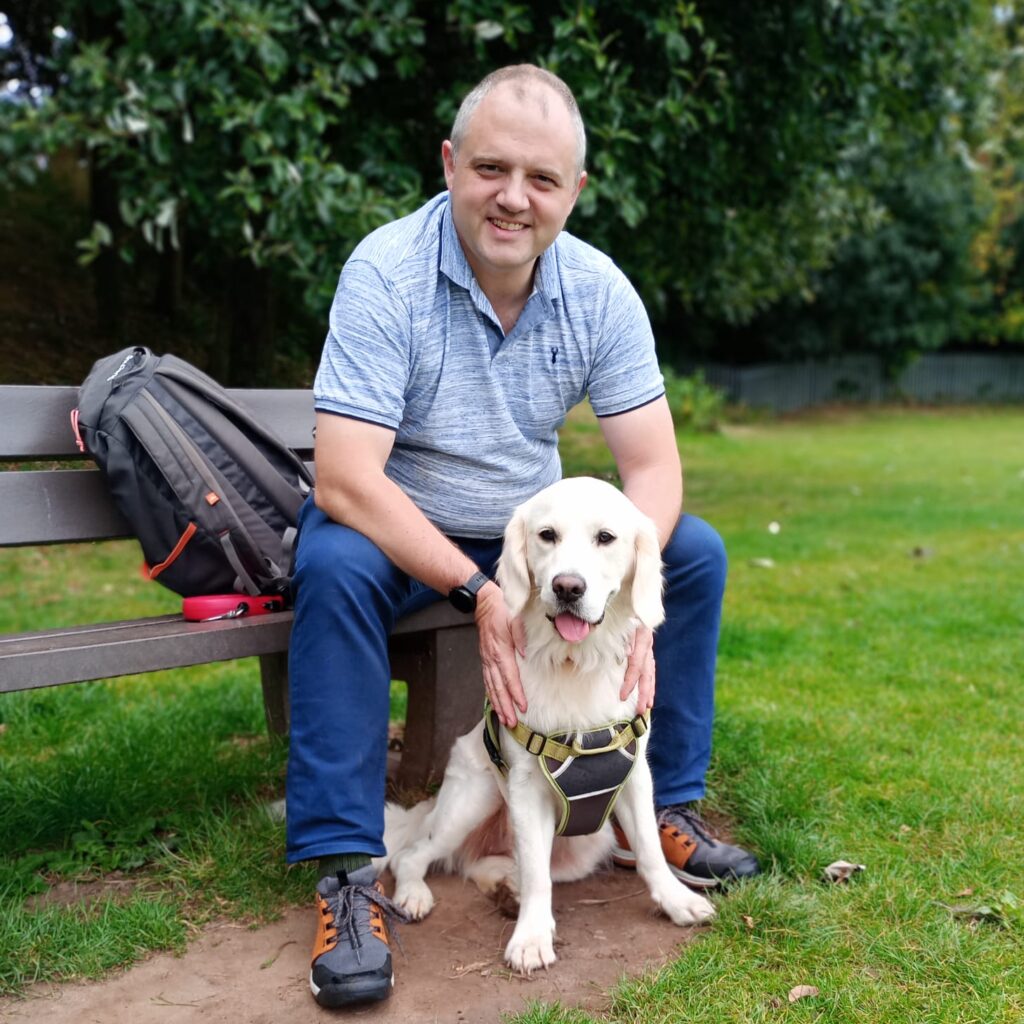Neurodiversity in scripture
The IMAGE OF GOD
What is the best way of understanding autism? There are several common models in the world – the medical disability model, the sociological disability model and the cultural difference model. They are all partly true and partly false. But I think the Bible gives us some better models for understanding it!
It turns out that understanding autism is all tied up with understanding what it really means to be human. Now that’s a contentious topic, with the prospect of AI and so on, but the best way to start talking about it is one that has worked well for thousands of years – the story of creation and fall in Genesis 1-3.
In the Garden
It was written primarily to tell people (originally in the Bronze age) why people are the way we are, and why the world is the way it is. And the backstory it gives to humanity is far truer to the way we are today than any of the alternatives – how we can be capable of the most sublime beauty, love and self-sacrifice, but also of the most hideous evil and selfishness. Someone said it was written primarily as a history of human nature rather than a natural history of humans, and that’s about right.
It also explains why all people are valuable in a way that no other philosophy does and that has formed the basis for our society and laws for centuries.
Adam and Eve started off in Genesis 1-2 with a life that was perfect both internally and externally. They had a long list of blessings – things that were going very well for them.
And the passage talks about those in two different ways – some of them come under the heading of being “in the image of God” – functioning perfectly as people; others are under the heading of being “in the Garden of Eden” – being in the perfect environment.
Let’s start with the image of God. What does that mean?
In Genesis 1:27, we are told that Adam and Eve were made “in the image of God” (Gen 1:27) – and that means that from the point of view of creation, they look a bit like God. They look a bit like God specifically because they aren’t just a part of creation; they also have the ability to “rule over it” (Gen 1:26, 28). Sometimes people talk about it as us being “sub-creators” – that we’re part of this amazing work of art that is the universe, but also that we can shape it, understand it and change it ourselves.
People are also in the image of God because of how we are in relationship with others. God is himself a Trinity; God sometimes uses plural pronouns for themselves (Gen 1:26) in this passage. And therefore the Bible tells us that it’s not just Adam or Eve that is in God’s image – it’s Adam together with Eve; they are told to increase in number, and they do that through relationship.
They were also living in the perfect environment – the Garden of Eden. Food was abundant and easy to come by; there were jewels and precious stones; there wasn’t even bad weather!
The Fall
But of course Adam and Eve messed it up. They disobeyed God’s instructions; they wanted to decide what was right for themselves, and everything fell apart – an event known as the Fall.
If Adam and Eve were sub-creators – made to be part of a beautiful artwork who also develop that artwork towards the artist’s original intention, then they rejected their place and role. Instead of fulfilling their purpose of growing the beautiful garden into the wilderness of the world, they trashed the world and made it into a noisy building site. Instead of perfect relationships, they spiralled downwards into mutual blame and recriminations (Genesis 3). And all of us are living downstream from the Fall.
We aren’t good caretakers for the world and our relationships are often broken. We’re told that after everything had gone wrong, Adam had another son “in his own likeness, after his image” (Genesis 5:3) – i.e. Adam’s image rather than God’s, and that we’re all descended from that son, Seth. We don’t show God’s image to the world any more; we aren’t in God’s image any more.
But God’s image hasn’t completely gone. It’s like we’re an artwork which has been covered in graffiti. We still retain some of our original dignity and value. You can still sometimes see the genius artist behind us when you see some of the wonderful things that people are capable of. But you can also see the ugly bits – the damage and the scars.
We still retain many of the abilities which God gave us to worship him and rule creation. We still retain some of the dignity from being originally made in God’s image, hence why killing people is so wrong (Genesis 9:6, James 3:9 – note that they both refer to creation in God’s image rather than us continuing to be in God’s image).
But we aren’t perfectly in God’s image any more; we’re in a broken and distorted version of that image. Sometimes we get stuff spectacularly right; sometimes we get stuff appallingly wrong.
We are all, every single one of us, damaged works of art; distorted reflections of the perfect. And that is both our glory and our shame.
Other Writers
This isn’t the normal way that the doctrine is presented, but I think it makes some of the tricky bits further down the line much easier. But what I’m saying here is not new. Here’s Hippolytus of Rome (died AD 235):
These things then, concerning spiritual gifts, which are worthy of note, we have set forth. God gave these gifts to people in the beginning in accordance with his will, presenting them with his own image, which had been lost.
Or Charles Wesley
Adam’s likeness now efface,
Stamp thine image in its place!
(Hark the Herald Angels Sing)
Or St Paul:
As was the man of dust [Adam], so also are those who are of dust, and as is the man of heaven [Jesus], so also are those who are of heaven. Just as we have borne the image of the man of dust, we shall also bear the image of the man of heaven.
(1 Corinthians 15:48-49 (ESV)
All three of those references show that the writers understand that people bear Adam’s broken image rather than God’s perfect image, but that God’s image is being and will be restored in us by the work of his Spirit.
Outside the Garden
But it’s not just the image of God in us that is broken. It’s our location too. Adam and Eve started off in the perfect environment – the Garden of Eden, but when they rejected God’s stated purpose for them, they were also excluded from the garden, to live in the place of chaos – the wilderness.
There is a long list of things that are features of life in the wilderness that weren’t features of life in the garden. Sin, death, frustration, pain, relational disharmony, blame shifting. And the problems are both internal and external. Things and people in the wilderness are broken in a way that they weren’t in the garden. Work is hard; the weather is often bad; there is sickness and disability in the wilderness in a way there wasn’t in the garden. God was in the garden; we are alienated from him in the wilderness.
That’s not to say that all brokenness here is the result of specific things we’ve done wrong. It really isn’t. It’s that as a result of our actions as a species, we’re being born, living, and dying in a hostile environment where these kind of things happen.
I remember watching a video about a village in Uganda where people needed to walk several miles every day to get water from a river. It was meant to be a fundraising video for the charity that was trying to install water pipes in the village, but I couldn’t get round the question of why on Earth anyone would build a village several miles from the nearest water supply. The video didn’t answer it, and neither did the website of the charity.
But the point here is that their situation is basically the same as ours. We live in a dumb place – outside the garden. Our ancestors chose it, for some reason, and we choose to continue here. It’s not where we are going to thrive or achieve our best life chances. We suffer all kinds of things as a result of it, but this is where we are.
Every single person is born outside the garden; every person (except one) is born in the image of Adam and Eve. Every single person is in some way broken.
For some of us, part of that brokenness takes the shape of the sensory and relational impairments that come with autism. For other people, they take different forms. We are broken, but we aren’t any more or less broken than anyone else.
What Genesis 1-3 gives us is a powerful framework for understanding why we are all simultaneously beautiful and broken, and why that beauty and brokenness applies not just to us as individuals, but also as a society.
The surprise twist to the story is that God didn’t stay in the garden. He followed us out into the wilderness, born in the wilderness as a man who was the very image of God, in order that he could find us, bring us back into the garden and ultimately restore us into the image of God seen in the face of Christ – a restoration that is both individual and communal.

autism in genesis
This is part of a short series about what Genesis has to say about autism.

Further Reading
John Allister
John Allister is the vicar of St Jude’s Church in Nottingham, England.
He is autistic, and has degrees in Theology and Experimental & Theoretical Physics.


